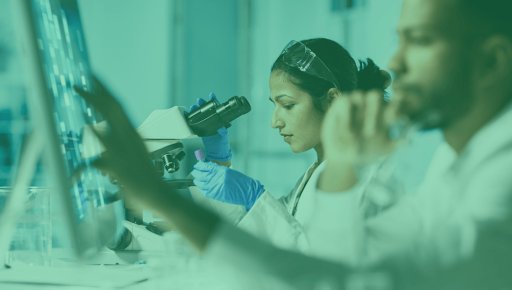In the healthcare system, patients depend on physicians and nurses as well as a host of other healthcare professionals. These allied health professionals provide crucial diagnostic, preventive, administrative, and therapeutic services that make up a vital support system for each patient.
Allied healthcare professionals: Who they are and how they help
Allied health refers to professions in the healthcare industry that aren’t nursing or medicine. These make up the healthcare staff who support everything from administration to technical and rehabilitation services.
Allied healthcare professionals have education and training specifically relevant to the duties they perform. These professionals can work directly or indirectly with patients. Those who work with patients often collaborate with physicians, though some may also provide individual specialist services.
One of the most important services they provide is supporting an overburdened healthcare system. With nursing shortages and budgetary cuts affecting most care settings, allied healthcare professionals are the ones that physicians and patients depend on to keep the system working efficiently.
Primary care providers
Allied healthcare providers who work in primary care clinics are many times the first point of contact for patients while still working alongside physicians to diagnose and treat those who need help.
Dental hygienists are part of primary care, performing dental cleanings and offering preventive dental care while under the supervision of a dentist.
A pharmacist is also a primary care allied healthcare professional, dispensing medicine and, in some instances, recommending over-the-counter options for patients.
Nutrition supervisors are another example, overseeing nutritional decisions at institutions. Additionally, healthcare technicians assist nurses and doctors with medical tasks while making patients comfortable in hospital and clinic settings.
Because they are the people who tend to have the most interaction with patients, these professionals offer the support patients need in both clinics and emergency settings.
Administrative professionals
Administrative professionals answer phone calls, file paperwork, and manage offices. They can also oversee the financial aspects of providing healthcare by dealing with billing and insurance agencies.
One example of an administrative professional is a front desk receptionist, who handles administrative support, schedules appointments, and takes contact information.
A medical transcriptionist is another administrative allied healthcare professional. This person takes audio recordings that doctors and other members of the medical team make, turning them into typed transcripts.
Medical coders also fit into this category, transforming patient information into medical codes that insurance companies rely on to track patients.
Administrative professionals keep the wheels of any healthcare setting running smoothly so that patients can receive the best possible outcomes and the healthcare providers can focus on helping those in need.
Health promotion
Allied healthcare professionals can also offer education on how to achieve and maintain a healthy lifestyle. Many work in underserved populations and nonprofit organizations while others work for the government and inform citizens about health-related issues.
Environmental health specialists fit into this category. They help enforce regulations on issues like sanitation, health hazards, and even food.
Health educators teach communities about how to cultivate health while also helping to build strategies that promote the well-being of individuals. Dieticians and nutritionists also provide education, helping clients understand how the foods they eat impact their overall well-being.
Health promotion professionals help ease the burden on the healthcare system by providing preventive education. When people have the information they need to make wiser lifestyle choices, the need for urgent medical intervention can decrease.

Diagnostic professionals
These allied healthcare professionals use diagnostic machinery, like MRI and X-ray machines, to help diagnose patients. Most of the time, these professionals are technicians who have training with one specific type of machinery. In some instances, they may work in offices and settings that focus on diagnostic services.
Ultrasound technicians and radiologist technicians fit into this category. Ultrasound technicians use equipment to examine the abdomen, heart, and reproductive organs, while radiologist technicians put patients in the correct position for X-rays.
A nuclear medicine technologist is another type of diagnostic professional. They prepare radioactive medicine that patients take to help create clearer images during imaging tests.
Diagnostic professionals help patients get answers more quickly so that they can get treatment sooner. Timely and accurate diagnoses save money and help reduce the stress on the healthcare system.
Rehabilitative professionals
Rehabilitative professionals assist patients in restoring function to their minds and bodies. Patients rely on them after traumatic injuries as well as after physical or mental illnesses.
Occupational therapists help patients regain the ability to perform everyday tasks, while art therapists can help patients work through their emotions.
Speech pathologists assist children and adults with communication and swallowing problems.
Other examples of rehabilitative professionals are psychologists, who work to help patients learn to cope with mental health disorders or stress, and physiotherapists, who help determine the cause of an injury and create exercise plans to treat the problem and prevent future issues.
Rehabilitative professionals assist in improving patient outcomes. They focus on treatment, putting together individualized plans that help educate patients on how to prevent future injuries or illnesses or how to manage chronic conditions.

Where allied healthcare professionals work
These healthcare professionals work in a variety of settings. They can work in hospitals or clinics, where they have access to patients and have the chance to be present during their treatments. For example, diagnostic professionals can operate healthcare machinery in hospitals and clinics to provide patients with the answers they need.
Some allied healthcare professionals work in private practice, while others provide their services in home settings. Medical billers can work from home, for example, since their job is administrative in nature.
Choosing your next rewarding position
Providing allied healthcare services offers the chance to help medical professionals, individual patients, and entire communities. At Prolink, we can assist you in finding the job that will fulfill your goal of helping others while showcasing your training and skills.
With all types of allied health positions available, we are here to guide you. Reach out to Prolink today or click below to create your account and get started.









